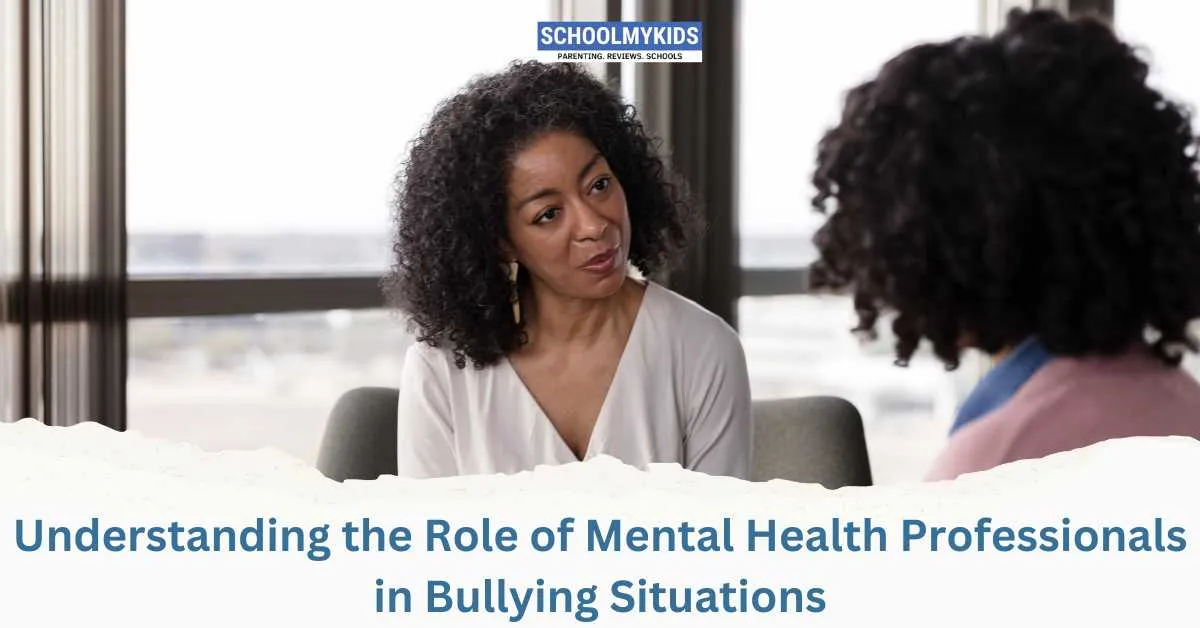Bullying can have a profound and lasting impact on a child's mental and emotional well-being. When children face the challenges of bullying—whether at school, online, or in their communities—their ability to cope, recover, and develop resilience can be significantly compromised. Mental health professionals play a crucial role in mitigating these negative effects, providing essential support, and guiding both children and families through the healing process. This article explores the various roles that mental health professionals serve in bullying situations, the types of interventions they offer, and how their expertise can help children reclaim their sense of self-worth and well-being.
The Impact of Bullying on Mental Health
Before delving into the roles of mental health professionals, it is important to understand the breadth of bullying’s impact on a child's life. Bullying can lead to:
- Emotional Distress: Persistent feelings of sadness, anxiety, or fear.
- Behavioral Changes: Withdrawal, aggression, or sudden shifts in academic performance.
- Social Isolation: Difficulty forming or maintaining healthy relationships.
- Long-Term Mental Health Issues: Increased risk of depression, anxiety disorders, and low self-esteem, which can extend into adulthood.
These challenges underscore the need for professional support, as early intervention can help break the cycle of distress and foster resilience.
Who Are the Mental Health Professionals Involved?
School Counselors
School counselors are often the first line of support within the educational environment. Their role includes:
- Early Identification: Recognizing signs of bullying and related emotional distress through regular interactions with students.
- Immediate Intervention: Providing on-the-spot support and strategies to help children cope with acute episodes of bullying.
- Coordination: Acting as a liaison between students, teachers, and parents to ensure that bullying incidents are reported and addressed in a timely manner.
Child Psychologists
Child psychologists specialize in understanding the developmental and emotional needs of children. Their contributions in bullying situations include:
- Assessment and Diagnosis: Evaluating a child’s mental health to identify underlying issues such as anxiety, depression, or trauma resulting from bullying.
- Individual Therapy: Offering one-on-one sessions to help children process their experiences, develop coping strategies, and build resilience.
- Behavioral Interventions: Utilizing techniques such as cognitive-behavioral therapy (CBT) to help children reframe negative thoughts and reduce the emotional impact of bullying.
Licensed Therapists and Counselors
Licensed therapists and counselors work with children and families to address a wide range of issues, including those stemming from bullying:
- Family Therapy: Addressing the broader family dynamics that may influence or exacerbate a child’s response to bullying. Family sessions can improve communication and support networks at home.
- Group Therapy: Facilitating group sessions where children can share experiences, learn from peers, and feel less isolated. Peer support in a structured environment can reinforce positive coping strategies.
- Specialized Interventions: Implementing programs focused on social skills, self-esteem building, and stress management, which are critical for children who have experienced bullying.
How Mental Health Professionals Help in Bullying Situations?
1. Providing a Safe Space for Expression
One of the most important roles of mental health professionals is to create a safe and non-judgmental environment where children feel comfortable expressing their feelings. This safe space allows children to:
- Voice Their Emotions: Discuss the fear, sadness, or anger they experience as a result of bullying.
- Process Trauma: Work through the emotional aftermath of bullying in a structured and supportive setting.
- Build Trust: Establish a relationship with a professional who validates their experiences and reassures them that they are not alone.
2. Developing Coping Strategies
Mental health professionals equip children with practical tools to manage the stress and anxiety associated with bullying. These strategies may include:
- Mindfulness and Relaxation Techniques: Teaching children how to use deep breathing, meditation, or progressive muscle relaxation to calm their minds during stressful moments.
- Cognitive-Behavioral Techniques: Helping children identify and reframe negative thought patterns that result from bullying, fostering a more balanced and positive perspective.
- Problem-Solving Skills: Encouraging children to develop a proactive approach to handling bullying situations, including assertive communication and seeking help when necessary.
3. Building Resilience and Self-Esteem
A core objective of therapy in bullying situations is to help children rebuild their self-esteem and develop resilience:
- Empowerment: Through targeted interventions, mental health professionals encourage children to recognize their strengths and capabilities, fostering a sense of empowerment.
- Positive Reinforcement: Therapists help children set achievable goals and celebrate small victories, which reinforces their ability to overcome adversity.
- Resilience Training: By working through challenges and learning from setbacks, children gradually develop the resilience needed to navigate future difficulties.
4. Facilitating Communication and Mediation
Bullying often disrupts the normal communication channels between children, peers, and even family members. Mental health professionals can:
- Mediate Discussions: Act as neutral mediators in conflicts between children or between children and their peers, helping to resolve disputes constructively.
- Improve Family Communication: Guide families in having open, supportive conversations about bullying, ensuring that parents understand how to support their child effectively.
- Enhance Peer Relationships: In group therapy or school counseling sessions, professionals work to rebuild trust among peers, promoting a more inclusive and respectful environment.
5. Coordinating with Schools and Communities
Mental health professionals often work in tandem with schools and community organizations to create a comprehensive support network:
- Policy Advocacy: They can provide expert recommendations for school policies that better protect students from bullying and promote a safe educational environment.
- Training Programs: Professionals may offer training sessions for teachers and staff to recognize the signs of bullying and respond appropriately.
- Community Outreach: Engaging in community programs that raise awareness about bullying and mental health, creating a broader culture of support and inclusion.
When to Consider Professional Help?
Knowing when to seek the help of a mental health professional is critical. Parents should consider professional intervention if they notice:
- Persistent Behavioral Changes: Ongoing withdrawal, aggression, or sudden changes in academic performance.
- Emotional Distress: Signs of chronic anxiety, depression, or low self-esteem that do not improve over time.
- Physical Symptoms: Regular complaints of headaches, stomachaches, or other psychosomatic symptoms, especially if these occur predominantly on school days.
- Social Isolation: A noticeable reduction in social interactions or a reluctance to engage in previously enjoyed activities.
- Traumatic Responses: Symptoms such as nightmares, flashbacks, or extreme fear related to school or social situations.
Conclusion
Mental health professionals play an indispensable role in addressing the consequences of bullying. Through a combination of counseling, therapy, and coordination with schools and families, they provide the necessary tools for children to cope with, recover from, and ultimately overcome the adverse effects of bullying. By creating safe spaces, developing coping strategies, building resilience, and fostering healthy communication, these professionals empower children to regain their confidence and thrive despite the challenges they face. For parents and educators, recognizing when to seek professional help and understanding the role of these experts can make all the difference in ensuring a positive, supportive environment where every child can feel safe and valued.









Be the first one to comment on this story.